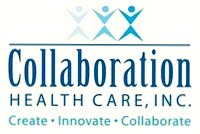We’ve been living with the Affordable Care Act for over
three years now. The past three years were a perfect opportunity to educate the
public about what health care reform actually is and the “value proposition” it
provides. Most of the provisions of the ACA that will impact most Americans are
just now coming up- and unfortunately, most of the American public has no clue.
The value proposition and the roles of all the stakeholders in the new system
were never clearly defined. We were too focused on fighting it rather than try
to figure out the way to make sure it works.
“Consumer engagement” is another of the many buzzwords being
thrown around in the new health care+
nomenclature. Engagement to health care is about getting people to do what health care wants them to do. In the current health care world, engagement is a transaction. Real engagement is about commitment and doing what is right.
Most of the general public agrees something needs to be done
to fix the health care system in America. As we have been arguing for over 100
years the disagreement comes from how best to fix it.
Consumer engagement
is not just taking part in a transaction to participate in a wellness program
because they are being paid or enrolling in the health insurance exchange to
buy health insurance. Consumer engagement is about understanding that health
care is now a social and economic issue in this country that needs to be
addressed, and everyone needs to be on board to make it happen. Everyone.
With the lack of consumer trust in employers, government,
and the health care system itself, individuals are looking for leadership to
help guide them to do what they know needs to be done. In Seth Godin’s book,
“Tribes,” he defines leadership as the ability to transform a “shared interest
into a passionate goal and desire for change.” We have no leadership for the
individual consumer in health care today. We simply have transaction managers. Transaction
managers may do some things to get people to do what they want- but they won’t
reach everyone that needs to be reached, and certainly won’t get individuals
engaged.
Godin argues that good things happen when “tribes” have the
leadership and shared vision to change the way things are. Crowds are simply
tribes without a leader. Today, health care consumers are simply a large crowd
seeking/begging for some leadership. When they get the leadership, many will
become much more engaged than they are today.
Godin states, “The movement happens when people talk to one
another, when ideas spread within the community, and most of all, when peer
support leads people to do what they always knew was the right thing.”
Especially today, we need a consumer movement to begin in health
care. Unfortunately, consumers are in dire need of a trusted leader they can
rely on to share the vision, the goals, and the purpose of reforming our health
care system- for everyone, not just a select few. When they have that leader,
the movement will begin, and consumers will become engaged in the ways health
care needs them to be engaged. They will change from a crowd to a tribe with a
passionate vision for doing what is right.
The consumer leaders to create the engaged tribe won’t come
from government, or employers, or health insurance companies. They will come
from within the existing crowed- we just need to find them and provide the
tools they need to do what they do best- facilitate the change that is needed.



